Premium Only Content
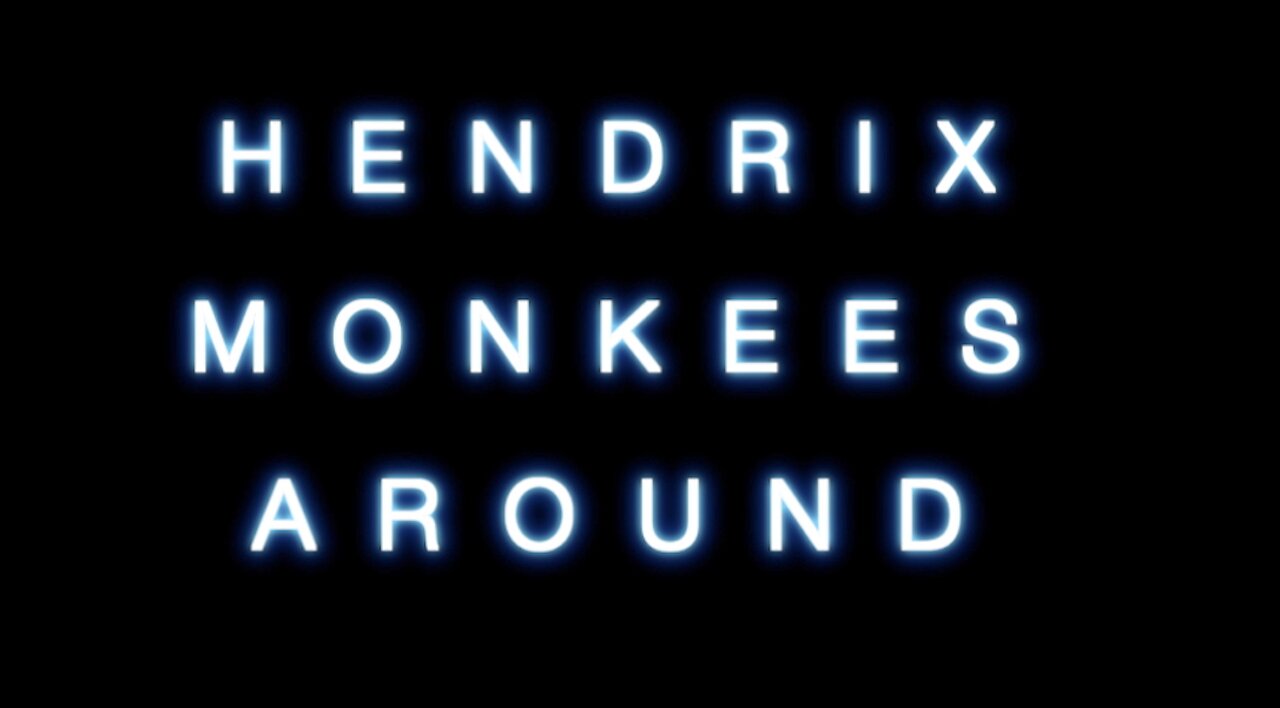
Hendrix Monkees Around -- a CRAZY Story!
Today’s story is about one of the oddest musical pairings in rock & roll history.
In 1967, a man who would soon become one of the world’s most legendary acid rock guitarists of all time, agreed to be the warm-up act for a tour by one of the goofiest – but hottest - bubblegum teenybopper groups in America at that time.
Yes, it’s true. Jimi Hendrix once opened for The Monkees. Ten shows, in fact.
--
They say that aims and ambitions can create strange bedfellows, and in the more naive days of the first decade of classic rock, it’s hard to wrap your mind around such an odd pairing – although keep in mind that in that very same year, The Who opened for Herman’s Hermits.
(And as an aside – the 2 minute Herman’s Hermit hit song – I’m Henry The 8th I Am – is one of the most annoying earworm monstrosities of all time. If you look it up and play it, don’t say I didn’t warn you!)
So to properly set this up, let’s go back a couple of years earlier.
The Monkees – how they came to be.
The Monkees were “artificially” assembled in 1965, and by the spring of 1967 – the time of this particular tour – they were arguably the biggest act in America.
Aspiring filmmaker Bob Rafelson had actually developed the idea for The Monkees a few years earlier, in 1962, but he was never able to sell the series. However, when in 1964 The Beatles' film, “A Hard Day's Night” came out to huge success, it inspired Rafelson to revive his idea for The Monkees.
Rafelson corrects the often-reported assumption that “The Monkees,” was inspired by “A Hard Day’s Night. “I wrote the show six years before the Beatles existed, and the pilot was based on my own life as an itinerant musician when I was 17 years old,” Rafelson continues. “What the Beatles did was to create a kind of permission for rock ‘n’ roll to be a popular subject for television.”
He and his partner Bert Schneider sold The Monkees TV Show to Screen Gems Television in 1965. The concept was to make a TV version of A Hard Day's Night. An imaginary band like the Beatles – but who hadn’t yet experienced any success.
Rafelson & Schneider’s original idea was to cast an existing New York group, The Lovin' Spoonful, who were not well known at the time. However, the band had already signed a record contract, which would have denied Screen Gems the right to market the music from the show – so they were out.
What the two television producers eventually decided to do, was run an ad in the Hollywood Reporter and Daily Variety inviting “insane boys, age 17–21” to audition. Here’s the ad:
MADNESS!!
Auditions.
Folk & Roll Musicians-Singers for acting roles in new TV series.
Running parts for 4 insane boys, age 17-21.
Want spirited Ben Frank’s-types.
Must have courage to work.
Must come down for an interview.
By the way - Ben Frank’s was a Sunset Boulevard, West Hollywood restaurant and favourite late night hangout of rockers like Frank Zappa & the Stones due to its proximity to many recording studios.
This “looking for talent”, cattle-call ad drew over 400 aspiring actors and musicians, all of whom were no doubt dreaming of getting paid handsomely to be in a rock band. Some of the hopefuls it attracted, included:
PAUL WILLIAMS – who ended up becoming a hugely successful singer, songwriter and actor in his own right.
STEPHEN STILLS - best known for his work with Buffalo Springfield and Crosby, Stills, Nash & Young. (Legend says Stills didn’t get the gig because his teeth weren’t straight enough. Stills did however, tip off his friend Peter Tork, and Peter ultimately got the gig.
DANNY HUTTON - also answered the ad and auditioned – he’s best known as one of the three lead singers in Three Dog Night.
HARRY NILSSON - also responded to the ad and auditioned. Nilsson also went on to be a renowned singer-songwriter himself, and was to become a drinking buddy of John Lennon during his “Lost Weekend” phase. And Nilsson actually had one of his songs later recorded by the Monkees – Cuddly Toy. It was a hit, and Nilsson earned enough in royalties to be able to quit his job at the bank, and begin his own career as a singer.
The producers finally settled on the quartet of Micky Dolenz, Davy Jones, Mike Nesmith and Peter Tork – but not before they all went through a series of about 15 separate screen tests each.
And then it seemed like overnight – and it really was the textbook description of ‘overnight success’, they went from being a lip-syncing boy band of comedians to becoming genuine international pop stars. Micky once said “it was the equivalent of Leonard Nimoy really becoming a Vulcan.”
With a stable of super-talented songwriters lined up to write for them, including Tommy Boyce and Bobby Hart – who wrote the Theme song and Last Train to Clarkesville, Neil Diamond, David Gates – of the band Bread, Andy Kim, Neil Sedaka and Carole King & Gerry Goffin – the hits began to pour in.
And combined with the talents of many amazing studio musicians including members of The Wrecking Crew, the Monkees TV show – their music – and their careers – all took off like a rocket.
When asked about the sudden rush of fame - Micky Dolenz – who had already experienced a level of fame as a child actor, said, “We were actually rather isolated and secluded from it. Our workload was enormous. We were rehearsing the TV show 10 hours a day and then rehearsing for touring and recording at night - that went on for a couple of years.” It was when they went on tour that it really hit them all. “Nothing could have prepared us for what we were presented with. Usually, you start in a new band and you play at birthday parties or in bowling alley parking lots. Our first Monkees gig was at a 10,000-seat sold-out arena. It was very exciting... and quite daunting. On the other hand, you couldn't hear anything anyway!" [Laughs]
The Monkees would go on to sell more than 75 million records, making them one of the top selling bands of all time with hits like "Last Train to Clarksville", "Daydream Believer", "Pleasant Valley Sunday", “I’m Not Your Steppin’ Stone”, and "I'm a Believer".
AND … they also had a very cool car. The Monkeemobile! A 1966 candy-apple red Pontiac GTO convertible with some so-sixties, modifications that included a rear-mounted parachute.
So there.
Critics of the Monkees said they were simply the "Pre-Fab Four", a made-for-TV knockoff of the Beatles; however, the Beatles themselves took it in stride and even hosted a party for the Monkees when they visited England.
George Harrison praised their self-produced musical attempts, saying, "It's obvious what's happening. There's talent there. They're doing a TV show. It’s a difficult chore and I wouldn't want to be in their shoes for the world.
Mike Nesmith once asked Lennon "Do you think we're a cheap imitation of the Beatles, your movies and your records?" to which Lennon assuredly replied, "I think you're the greatest comic talent since the Marx Brothers. I've never missed one of your programs."
Regardless of what The Beatles thought of them, a good summation of the negative backlash the band was getting can be seen in this article by dance band trombonist Jack Bentley – later the show business editor of the Sunday Mirror newspaper. Titled, “"A Disgrace to the Pop World", Bentley denounced the Monkees as talentless frauds who mimed to music played by others. An outraged Bentley wrote:
This idiotic Monkee business — was there ever a bigger spoof pulled on the pop world? …
The group’s musical fame is the result of a gigantic Hollywood TV publicity campaign. Americans never forgave the Beatles for not being born there, so they decided to create their own. Even the Monkees’ television show is a prolonged imitation from the Beatles’ films. The fact that the big spoof came off, making the Monkees No.1 on both sides of the Atlantic, is a downright disgrace, an insult to pop fans, a threat to the pop business as a whole and a deterrent to any youngster who has a musical future in mind.
Musicians like myself spend years of hard practice before being able to earn a living comparable to a grocery assistant’s. Even the lowliest pop group in Britain can’t get a job without some hard work…. Yet here are a bunch of kids trading on other people’s talents and cashing in on millions. Who can ever regard that No.1 spot with any seriousness again?
Musically, comparing the Monkees with the Beatles is like comparing a milk float with a Mercedes.
But this critical reputation has softened somewhat over the years, with the recognition that the Monkees were neither the first manufactured group nor unusual in this respect. Yes The Wrecking Crew musicians provided most of the musicianship, but as we now know, there were a LOT of artists using studio talent – bands like the Beach Boys, the Beatles, the Mamas and the Papas, and the Byrds.
In fact, the Wrecking Crew played on several hundred Top 40 hits.
And it’s been said that the Monkees pioneered the music video format and paved the way for every boy band that followed in their wake.
Monkee money also enabled their producers to finance the movies Easy Rider and Five Easy Pieces, which made Jack Nicholson a star.
Perhaps it wasn’t so much righteous indignation, but rather, thinly disguised jealousy that motivated the scornful dismissal of what must, in retrospect, be seen as an entertaining, imaginative and highly memorable exercise in pop culture.
And let it be known that in 2014 the Monkees were inducted into America's Pop Music Hall of Fame
The Monkees Discover Hendrix
Back to 1967 – at Monkeemania’s peak.
Micky Dolenz was the first Monkee to “discover” Hendrix. While visiting New York, a friend advised him to “check out this amazing musician in the Village who played guitar with his teeth”. Dolenz was impressed but didn’t remember the guitarist’s name until he saw The Jimi Hendrix Experience onstage at the Monterey Pop Festival several months later.
Mickey and Peter were sitting in the audience in Monterey, and as Mickey explains, “out walks these three incredibly decorated characters, and I just remember going, that’s the guy who plays guitar with his teeth! Afterwards I told our producers, hey you got to check this guy out!
The Monkees were about to embark on a U.S. concert tour and Dolenz strongly suggested to the show producers that Jimi Hendrix and The Experience would be a really cool opening act because they were very theatrical and The Monkees was this theatrical act.
Peter Tork and Michael Nesmith supported the choice; as both were anxious to be accepted as serious musicians and believed that Hendrix would lend them some credibility with rock critics and older record buyers. “Besides,” Tork would later say, “it would give us the chance to watch Jimi Hendrix perform night after night!”
Mike Nesmith had first heard Hendrix playing "Hey Joe" while listening to a cassette club recording at a dinner party with John Lennon, Paul McCartney and Eric Clapton. (Why don’t I ever get invited to those parties?)
Nesmith recalls, "Everyone at the table was silent”. "When the song was over, someone said, 'How could anybody be that good?'"
"When I got back to the hotel after that dinner, I ran into Micky. He told me he had seen Hendrix and asked him if he would be the opening act for the next leg of the Monkees tour, and Jimi had agreed."
Although Nesmith thought the combination of the Monkees and The Jimi Hendrix Experience - was "staggeringly weird," he couldn't help but let the thrill of seeing this electric new musician in person every night stop him from sensibly challenging the logic of joining up these two different acts.
Hendrix already had three hits in England but he was virtually unknown in America. His manager wanted to capitalize on the buzz generated by Jimi’s recent Monterey Pop performance, and The Monkees were just about the biggest act in the country at that time.
As the New York Times noted in 2006, "The Monkees wanted respect, and Hendrix wanted publicity." With the goal of attaining a mainstream hit in the United States, Jimi Hendrix and the Experience agreed to join the tour.
What could possibly go wrong?
The Odd Coupling Tour
The Monkees' 1967 summer tour occurred at the height of Monkeemania, visiting 28 different cities in the United States and England throughout July and August. Just five days before they began the tour, the Monkees TV series had taken home two Emmy Awards, including 'Outstanding Comedy Series.' And throughout the tour, The Monkees' third album, Headquarters, was at #2 on the charts behind The Beatles' Sgt. Pepper's Lonely Hearts Club Band.
Hendrix joined the tour in Jacksonville, Florida, in July of 1967. The musicians from both bands struck up of a friendship that Nesmith said thankfully outlived the tour.
Tales from the Monkees tour reveal that everyone got along great. "He was such a sweet guy," said Tork. "It was really just a pleasure to have him around for company."
It’s great that the two bands got along, because Monkees audience members had a slightly different reaction to Mr. Hendrix. The Monkees were playing to 12,000 14-year-old girls, so when Hendrix walked on stage, it was an absolute anomaly. Micky Dolenz said, "The parents were probably not too crazy to begin with about having to sit through a Monkees concert, much less this guy in a psychedelic Day-Glo blouse, playing music from hell, holding his guitar erotically, and then lighting it on fire ... Jimi would amble out onto the stage, fire up the amps and break into …
(Micky) “Foxy Lady – wah wah wah – We want Davy! We want Davy! We want the Monkees … It was very embarrassing.”
Eventually Hendrix had had enough. He had joined the tour on its first date in Jacksonville, Florida., on July 8, and stuck it out for nine more shows, exiting after a run of three concerts at the Forest Hills Tennis Stadium in New York City in mid July. Jimi walked off the Monkee’s stage for the final time, giving the finger to his audience as he left. And just like that – one of rock and roll’s most unlikely couplings – had come to an end. Jimi Hendrix and The Experience had been scheduled to play 29 tour dates.
Of his exit after a mere 10 days of Monkeemania? Hendrix has said that it was just the “wrong audience,” joking that he was being replaced by “Mickey Mouse.”
- An aside on Jimi. He had already had some strange employment experiences. Two of them come to mind.
A few years before meeting the Monkees, Hendrix had been hired by Little Richard, who then fired him after only one set.
Then Ike Turner of Ike & Tina Turner hired him. And shortly thereafter, they fired him.
And speaking of odd facts – I want to throw two other odd Monkees facts in here.
Mike Nesmith’s mother invented "Liquid Whiteout" in her kitchen in 1951, originally calling the stuff Mistake Out. Her correction fluid would go on to be a godsend for millions of typists and bring millions of dollars to herself and then to her son Michael Nesmith.
And, did you know that David Bowie’s real name is David Robert Jones. He went by Davy Jones in his early, formative rock & roll days, but he changed his name to Bowie to avoid confusion with the already famous Monkee Davy Jones. He picked Bowie based on frontiersman Jim Bowie and his famous knife.
So, as I said, the exposure of being on tour with the hottest act in America DID propel Hendrix and company to the next level, as his music began to be recognized in the United States.
"Purple Haze" debuted on the Billboard Hot 100 in August, and as a result, superstardom came quickly for Hendrix.
So Monkee-ing around for a few weeks may not have been that bad of an idea at all.
And whatever you think of The Monkees’ music, you have to admit that they had one of the most extraordinary careers of any band in rock and roll.
---
To support my channel: Patreon: https://www.patreon.com/peterbeamish
-
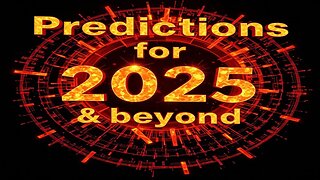 4:55
4:55
AmplifiedLIFE
8 months agoPredictions for 2025 & Beyond from Beyond
1223 -
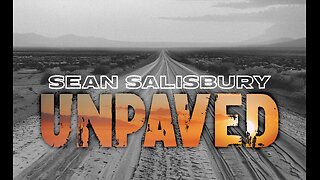 1:03:00
1:03:00
Sean Unpaved
2 hours agoCFB Deep Dive: Matt Moscona's Expert Takes on the Gridiron
9.88K -
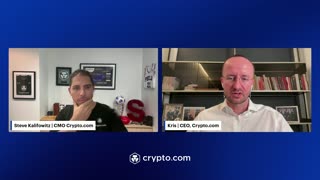 27:39
27:39
Crypto.com
1 day ago2025 Live AMA with Kris Marszalek, Co-Founder & CEO of Crypto.com
99.6K6 -
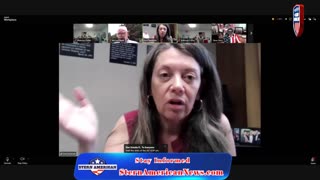 LIVE
LIVE
SternAmerican
23 hours agoElection Integrity Call – Wed, Aug 27 · 2 PM EST | Featuring Arizona
283 watching -
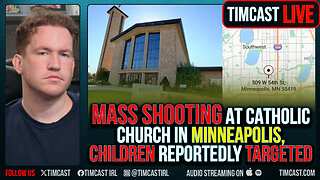 1:00:05
1:00:05
Timcast
2 hours agoMASS SHOOTING At Catholic Church In Minneapolis, Children Reportedly Targeted
111K78 -
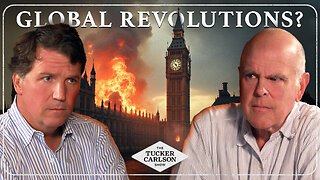 1:34:01
1:34:01
Tucker Carlson
1 hour agoChristopher Caldwell: Is It Too Late to Save the English-Speaking World?
5.58K40 -
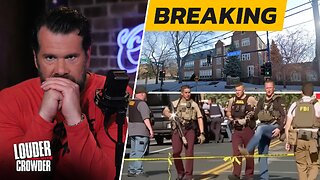 2:14:40
2:14:40
Steven Crowder
5 hours agoBreaking: Minneapolis Catholic Church Shooting Live Coverage
357K311 -
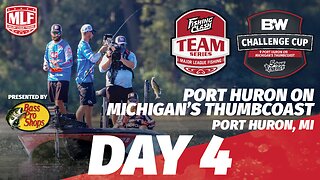 LIVE
LIVE
Major League Fishing
5 days agoLIVE! - Fishing Clash Team Series: Challenge Cup - Day 4
261 watching -
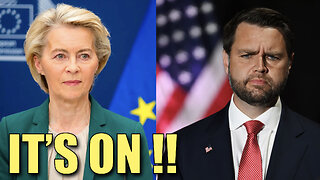 25:03
25:03
Neil McCoy-Ward
2 hours agoFURY As JD Vance Unleashes HELL On The UK & EU… (What We Know So Far)
3.48K9 -
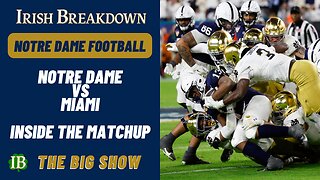 LIVE
LIVE
IrishBreakdown
2 hours agoNotre Dame vs Miami Preview - Inside the Matchup
8 watching